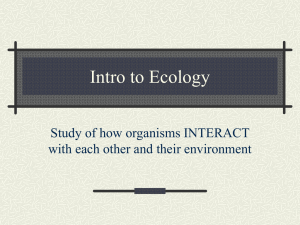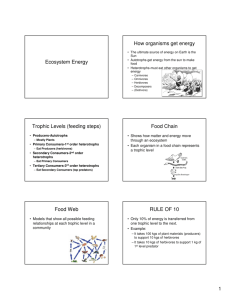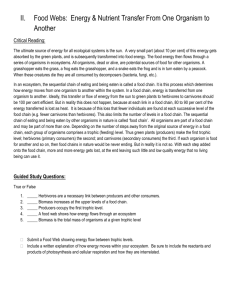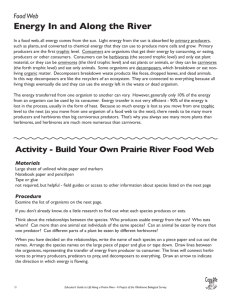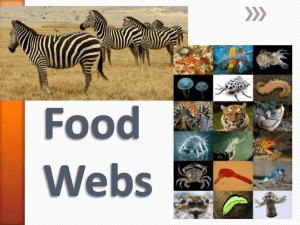Additional Trophic Level Menu Information
advertisement
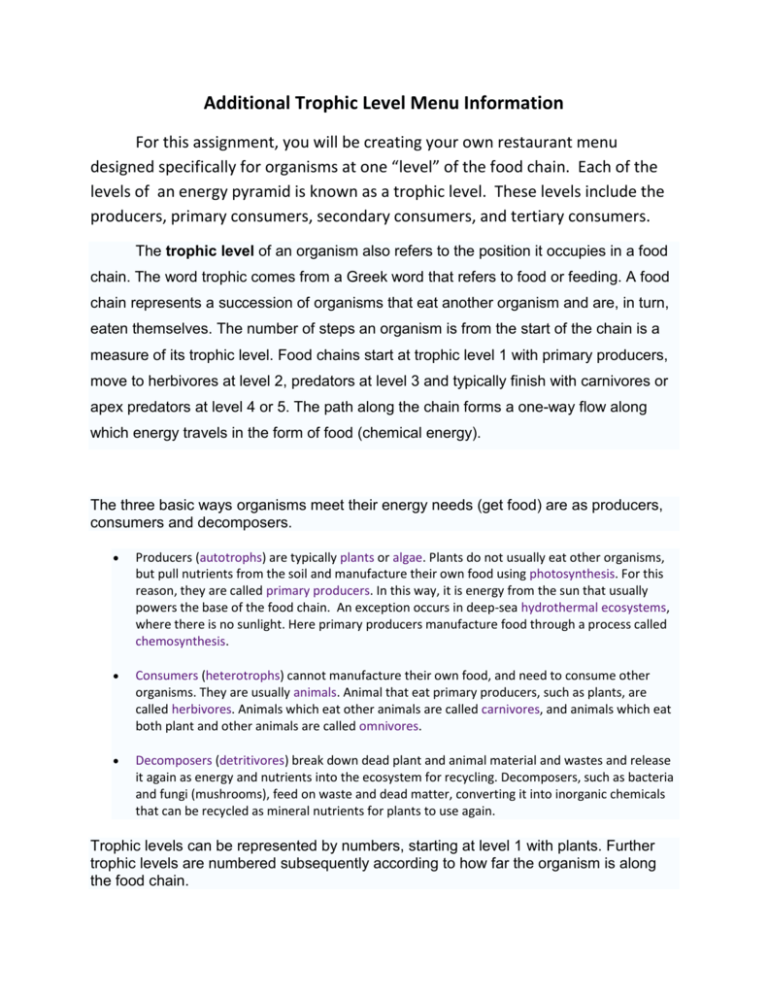
Additional Trophic Level Menu Information For this assignment, you will be creating your own restaurant menu designed specifically for organisms at one “level” of the food chain. Each of the levels of an energy pyramid is known as a trophic level. These levels include the producers, primary consumers, secondary consumers, and tertiary consumers. The trophic level of an organism also refers to the position it occupies in a food chain. The word trophic comes from a Greek word that refers to food or feeding. A food chain represents a succession of organisms that eat another organism and are, in turn, eaten themselves. The number of steps an organism is from the start of the chain is a measure of its trophic level. Food chains start at trophic level 1 with primary producers, move to herbivores at level 2, predators at level 3 and typically finish with carnivores or apex predators at level 4 or 5. The path along the chain forms a one-way flow along which energy travels in the form of food (chemical energy). The three basic ways organisms meet their energy needs (get food) are as producers, consumers and decomposers. • Producers (autotrophs) are typically plants or algae. Plants do not usually eat other organisms, but pull nutrients from the soil and manufacture their own food using photosynthesis. For this reason, they are called primary producers. In this way, it is energy from the sun that usually powers the base of the food chain. An exception occurs in deep-sea hydrothermal ecosystems, where there is no sunlight. Here primary producers manufacture food through a process called chemosynthesis. • Consumers (heterotrophs) cannot manufacture their own food, and need to consume other organisms. They are usually animals. Animal that eat primary producers, such as plants, are called herbivores. Animals which eat other animals are called carnivores, and animals which eat both plant and other animals are called omnivores. • Decomposers (detritivores) break down dead plant and animal material and wastes and release it again as energy and nutrients into the ecosystem for recycling. Decomposers, such as bacteria and fungi (mushrooms), feed on waste and dead matter, converting it into inorganic chemicals that can be recycled as mineral nutrients for plants to use again. Trophic levels can be represented by numbers, starting at level 1 with plants. Further trophic levels are numbered subsequently according to how far the organism is along the food chain. • • • • • Level 1: Plants and algae make their own food and are called primary producers. Level 2: Herbivores eat plants and are called primary consumers. Level 3: Carnivores which eat herbivores are called secondary consumers. Level 4: Carnivores which eat other carnivores are called tertiary consumers. Level 5: Animals which have no predators are at the top of the food chain. You will be creating a menu for organisms at a specific trophic level.




